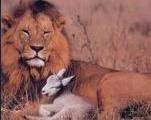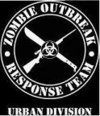4029tv.com
ROGERS, Ark. -- For more than 150 years, an important piece of Arkansas and American history has been relegated to obscurity.
In early 1857, a wagon train left Northwest Arkansas and headed west, bound for California.
The Francher-Baker train was made up of 14 large Arkansas families, about 800 cattle and around 30 wagons.
"They were en route to California for a better life and little did they know that Brigham Young had declared war on the United States two weeks before they entered the Salt Lake Valley," said Phil Bolinger, with the Mountain Meadows Monument Foundation.
So without knowing tensions were running high between the U.S. government and Brigham Young, the leader of the Chuch of Latter-Day Saints (also known as the Mormon Church), the families decided to camp in southwest Utah, in a place called Mountain Meadows.
For most of the families, it would be there final resting place.
"They were attacked by a few indians, but mainly Mormon militia men," Bolinger said.
"Under one order -- the order was 'do your duty' -- each man killed his man, in other words, point-blank, execution-style murder. And then the women and children weren't so lucky. They were mainly bludgeoned to death with rocks or gun stocks," Bolinger said.
On September 11, 1857, 121 men, women and children were murdered. Only 17 small children, all under the age of 6, were spared. Two years later, the orphans were reunited with relatives in Arkansas.
"Everyone who lived in Northwest Arkansas at that time, had some blood relatives that were members of this wagon train," said Scott Fancher, a descendant who has 27 relatives who died that day.
For years the Mormon church denied allegations of involvement and blamed local Native Americans for the slaughter.
Descedents of the victims have always wanted the church to own up and have wanted to get federal protection for the massacre site.
In the last 10 years, there has been movies and media coverage and trips to washington to fight for the site of the massacre to become a national historic landmark, and on July 2, it did.
"Finally we have some serious, bonafied, high order federal protection for the site to protect it from development or encroachment. We also have the recognition of the site as a nationally significant historic site," Fancher said.
Francher and Bolinger say the massacre was America's first 9/11.
"Interestingly enough, it was also an act of religious extremism, and that's another sort of eerie parallel between that and are more recent 9/11. But in both cases, religious extremists did basically horrible things to basically innocent people," Fancher said.
But in this case, more than a hundred years later, both sides have been able to reconcile.
"We're 150 years-plus into this story, and it's taken that long for the players to kind of meet in the middle and agree to be civil and both agree we won't get everything that we want but we get something better for everyone that's involved," Fancher said.
The national landmark dedication ceremony will be held in Utah at the site of the Mountain Meadows massacre on September 11.
Subscribe to:
Post Comments (Atom)


























































No comments:
Post a Comment